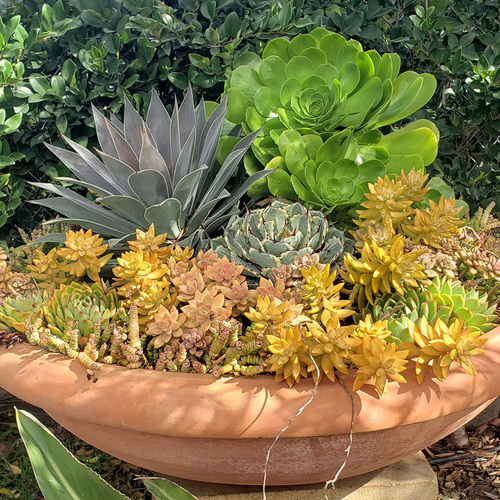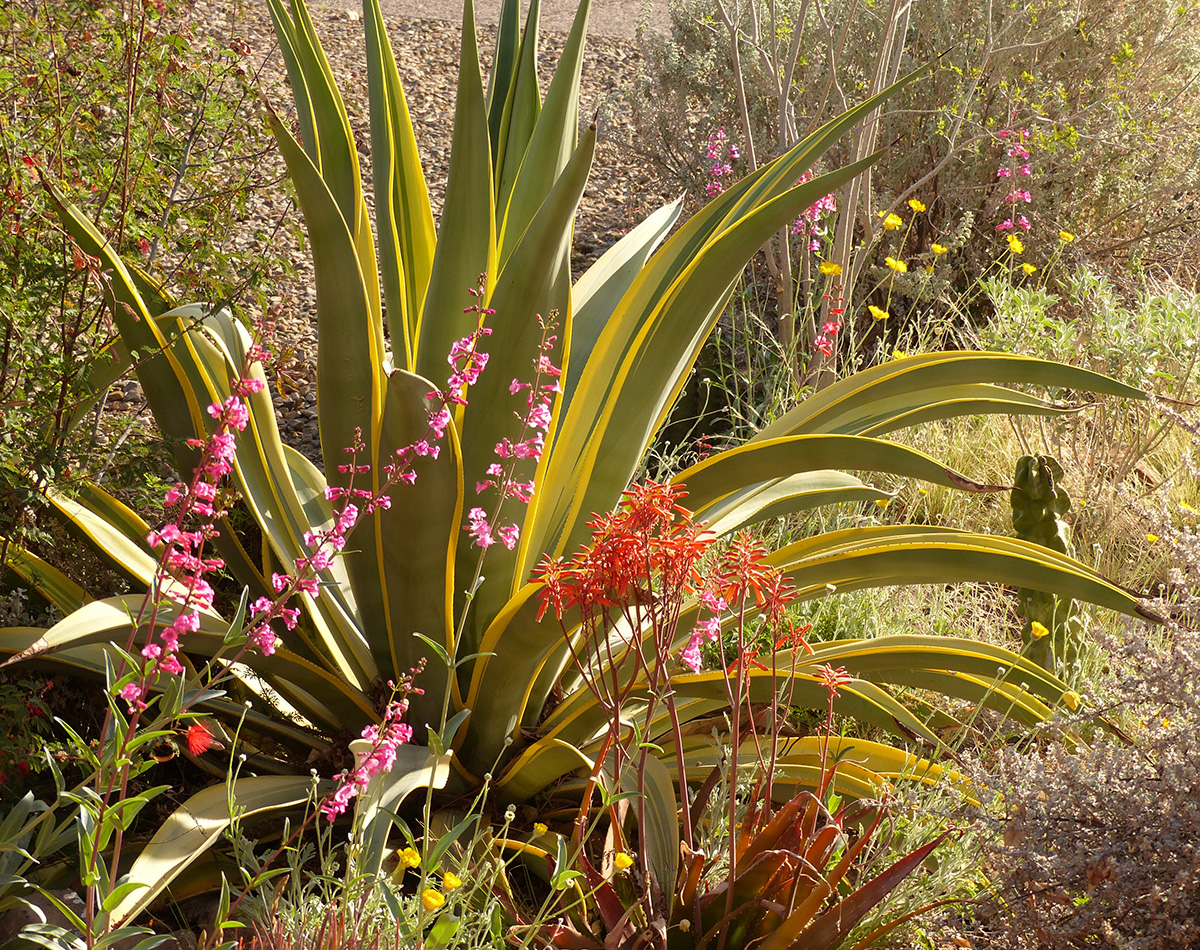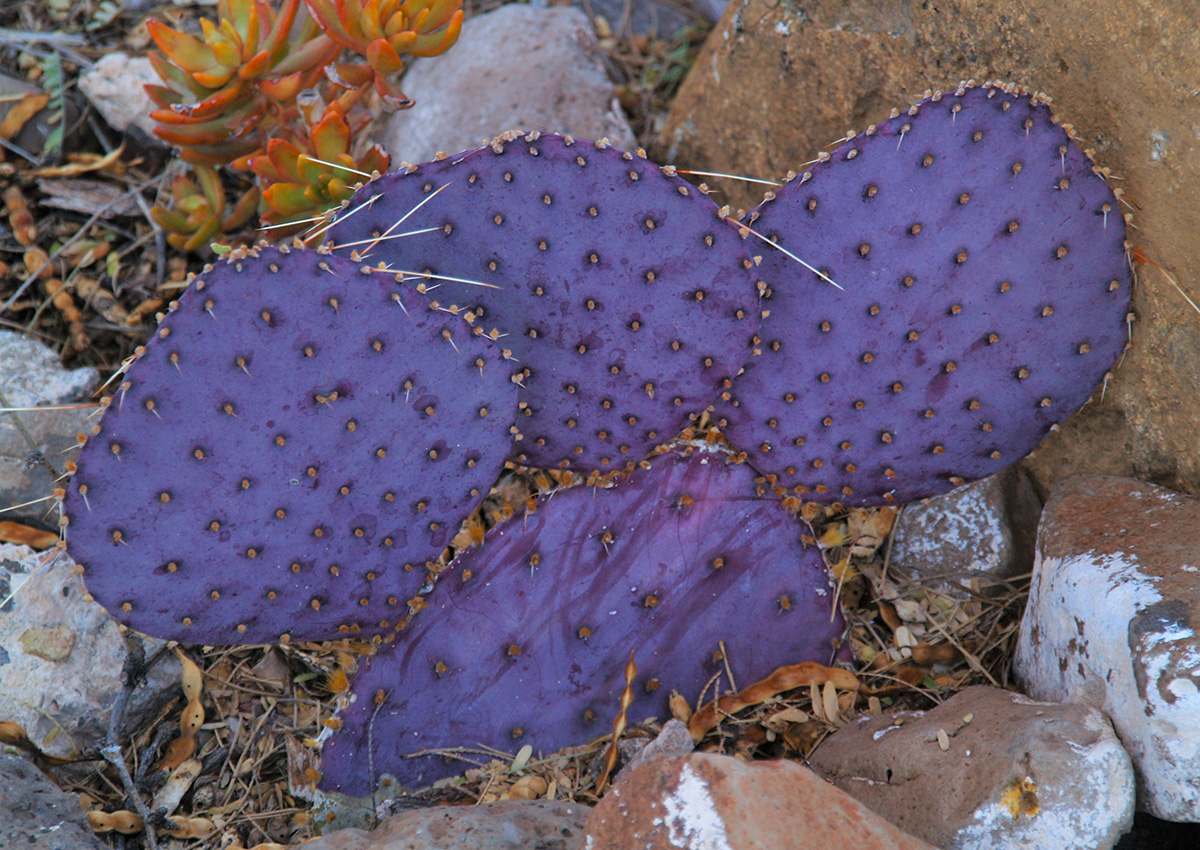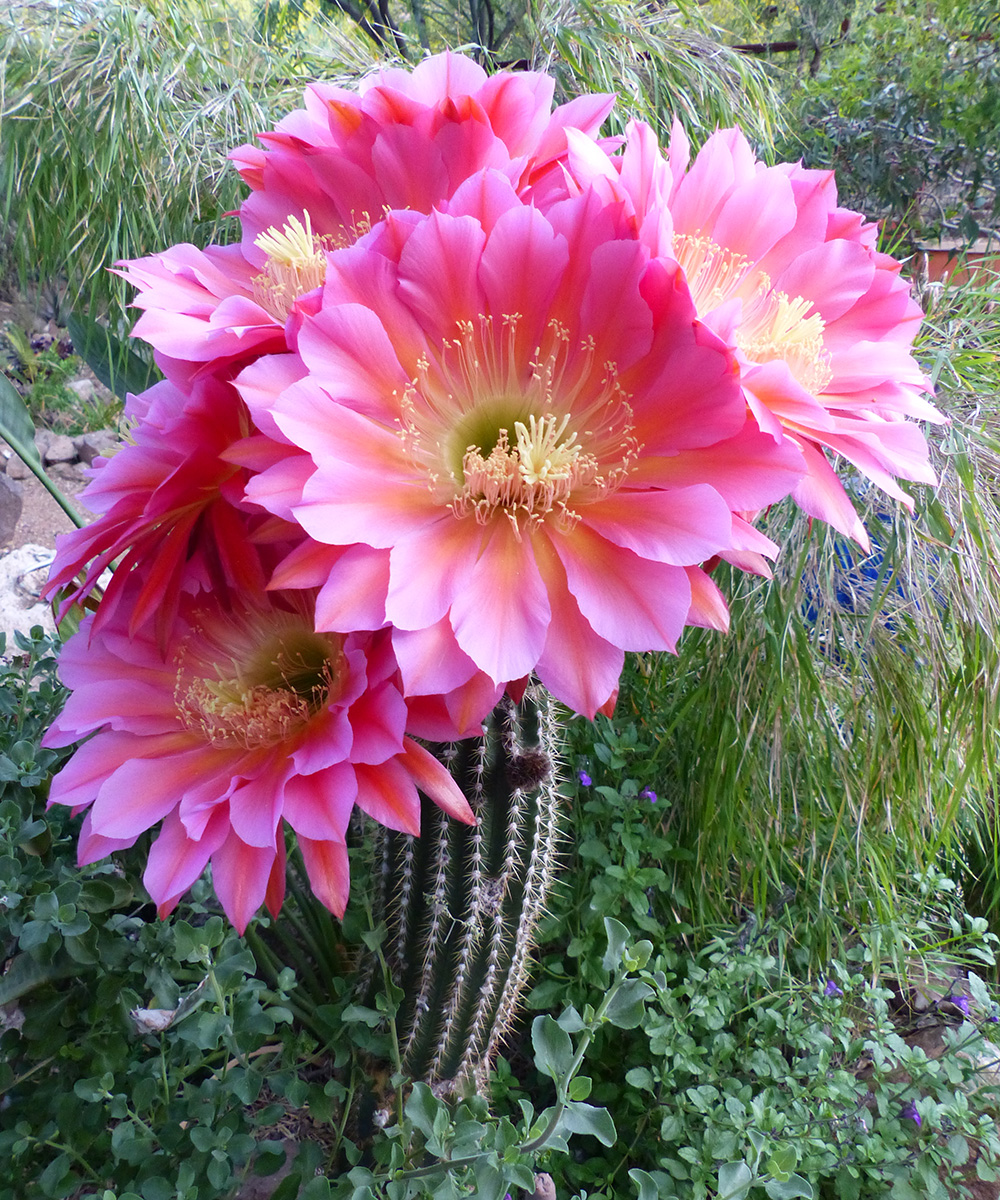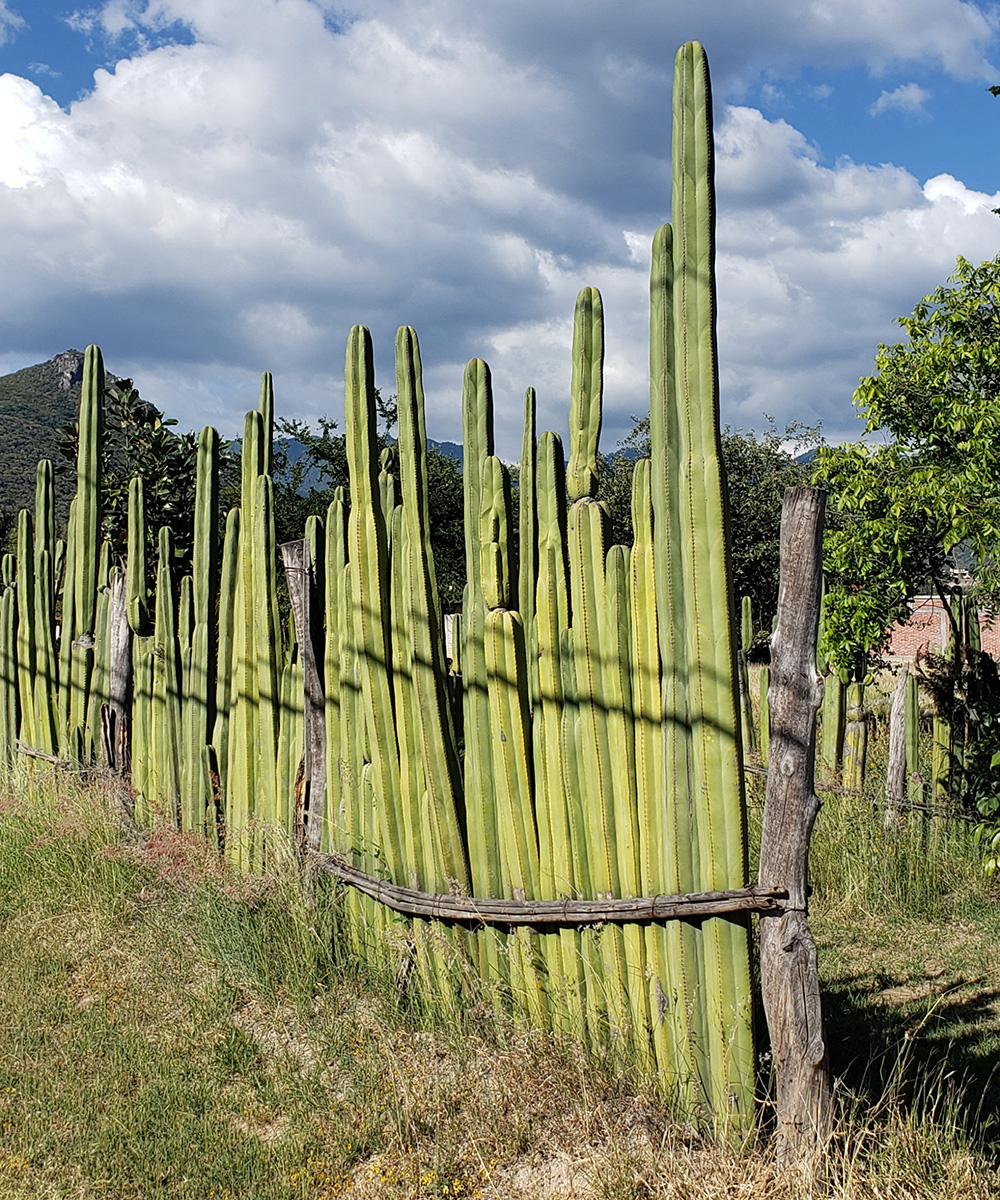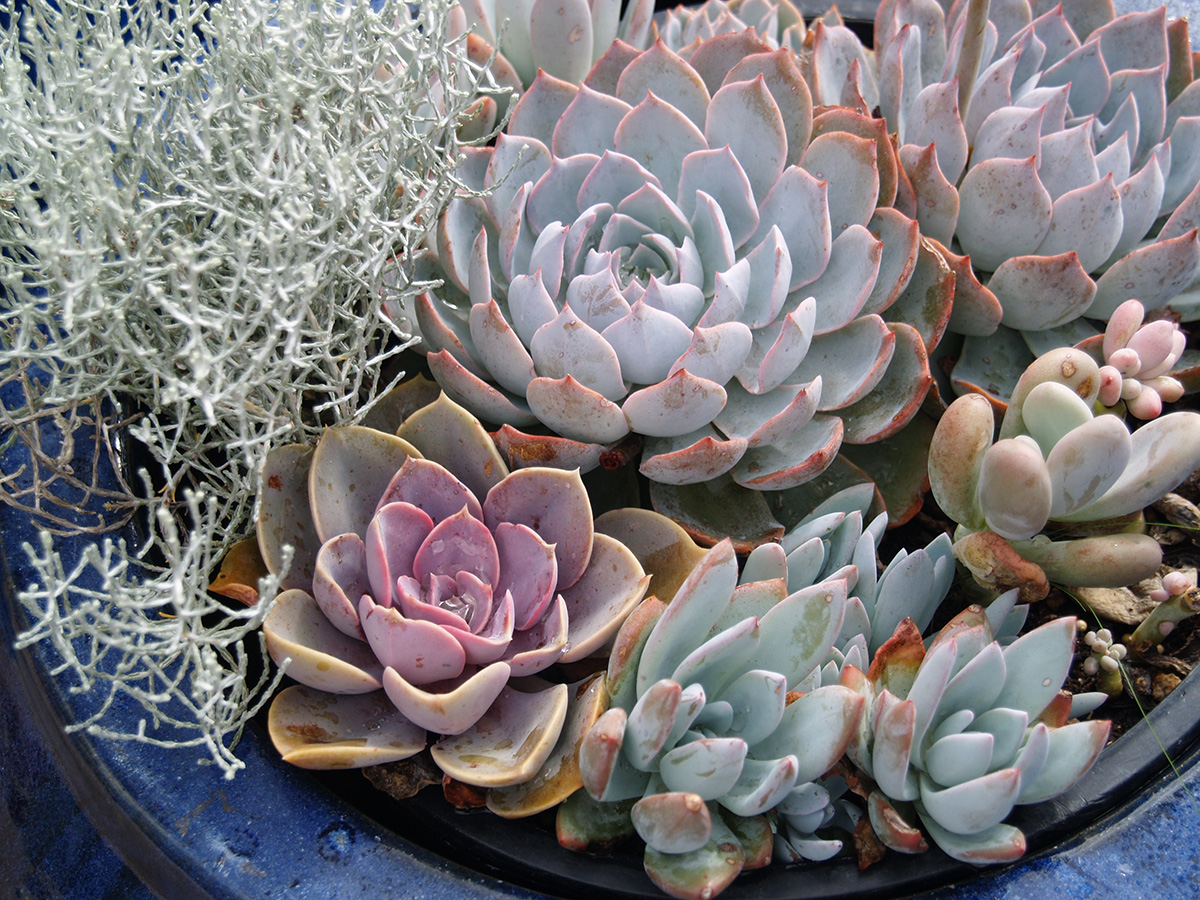Creating a sense of place has been a recurring garden theme for years now, and it lends authenticity to any setting, especially here in the Southwest. For me, nothing does this better than the use of succulents, both locally native ones and those that are well-adapted from far-off places. This may be one of the few unifying garden themes that rightfully extends across our Southwest region, from the California coast to South Texas. Indeed, succulents seem to be everywhere these days!
Their water-thrifty nature is a strong selling point in a region with erratic precipitation, recurring droughts, and frequent hot temperatures. Don’t have time to water today? They’ll still be there tomorrow. Dealing with gritty poor soil? Who cares! Going on vacation? No worries . . . they are the ultimate in durable plants.
If that is not enough to sell you, their spectacular diversity of form and color adds a sculptural element like no other category of plant, whether planted en masse in the ground or used in containers as focal points in cooler regions. Choosing your favorites is going to be your biggest challenge. Knowing your conditions is the first consideration, as some tolerate hot sun better than others, and many do best in bright shade. There is endless info online to help you decide.
Listing my own favorites could easily surpass the one hundred mark, so I’ll narrow it way down to just a handful of categories. All the following species will need:
- Excellent drainage
- Dry intervals between watering
- Full to dappled sun, depending on the extremes of your own conditions. Most are hardy into Zone 8 or 9, but frost tolerance varies, so do some research for your area.
Tree houseleek
Aeonium spp. and cvs.
Zones: 9–11
Size: Up to 3 feet tall and 2 feet wide, depending on the cultivar
Aeoniums are among the largest rosette-leaved plants in the sedum family, originating mainly in North Africa and the Canary Islands. A. arboreum and other species are attractive enough on their own, but selected variations and hybrids now span a wide range of colors and sizes. A few can have robust dinner plate–sized rosettes from minty green to nearly black-wine in color. Clustered evenly on sturdy stems up to 3 feet tall, they complement any other succulents with their perfect symmetry and flowerlike form. Although they’re excellent in sun on the West Coast, you’ll need to provide dappled light in desert locations like Tucson, Arizona. Some tolerate light frost, but others will not, so do your research and be prepared to protect them in colder areas. New colorful hybrids labeled as × Semponium, were created by crossing Aeonium with the tough genus Sempervivum. These new options have added to the color/size selection but exhibit little if any of their hardy Sempervivum heritage.
‘Arizonia Star’ Weber agave
Agave weberi ‘Arizona Star’
Zones: 8b–11
Size: Up to 5 feet tall and 7 feet wide
Agaves come in all sizes, from 3-inch minis to 8-foot giants. Some are formidably armed with teeth and spiny tips, and others are soft-leaved and gardener-friendly. A favorite of mine is ‘Arizona Star’ Weber agave. Allow adequate space when planting as it can reach 3 to 6 feet across in surprisingly short order. The gold-edged smooth leaves are luminous when backlighted, allowing the plant to stand out as an elegant focal point whether in the ground or elevated in a container.
Santa Rita prickly pear
Opuntia santa-rita
Zones: 7–11
Size: 4 feet tall and 5 feet wide
Prickly pears are structural icons of the Southwest, and I have dozens in my gardens, from the giant (and less spiny) O. ficus-indica down to some truly miniature forms. But the one that gets my attention over and over in all seasons is the Santa Rita prickly pear. Native primarily to southern Arizona, it is widely planted due to its robust form and richly colored pads in shades of blue-green to violet-purple. The best color develops when grown in dry conditions and during winter chill. This comes close to a color “not found in nature,” as they say, yet here it is! Handle with care though. It is well armed with short bristles called glochids that detach easily and can lodge in skin, gloves, and fabric. Plant this in the background or a less-frequented area to be on the safe side.
Hedgehog cacti
Echinopsis spp. and cvs.
Zones: 8b–11
Size: Up to 3 feet tall and wide, depending on the cultivar
These small to medium cacti range from clustering barrel forms to midsize columns. They are easy to grow in morning sun or partial shade in desert areas and are also suited to well-drained containers in wetter climates. They make a sculptural focal point or accent all year, quietly increasing in size. After a dry winter rest, their fuzzy buds appear, slowly enlarging until some warm day in April when hand-sized blooms suddenly burst open in unison for a glorious one-day engagement. Occasional blooms may appear throughout the growing season, but most will last just one day, perhaps two. Watch the buds closely and plan a last-minute gathering to share the occasion with friends.
Fencepost cactus
Pachycereus marginatus
Zones: 9–11
Size: 12 feet tall and 3 feet wide (over time)
The famed fencepost cactus hails from Mexico and needs little introduction. I include this as a favorite because it is one of the larger succulents that contributes height and structural elegance with minimal spikiness. Smooth vertical lines are uninterrupted by stops and starts like some columnar cacti, and its spines are tiny and do not detach easily, clustered only along the symmetrical ribs, which makes for easier handling when necessary. A better focal point or backdrop plant is hard to find, and slowly clustering specimens just keep getting better with time.
Echeveria
Echeveria spp. and cvs.
Zones: 9–11
Size: Up to 12 inches tall and wide
The pastel rosettes of echeveria are the perfect complement to all the above plants, coming in shades of waxy aqua-blue to rosy purple, wine red, and mojito green. In hot climates they may prefer a bit of light shade but in coastal areas can tolerate full sun. Depending on your conditions, they may appreciate a bit more moisture than other succulents, but good drainage is still essential, and they will tolerate dry periods without complaint. In recent years many hybrids have been created with closely related genera. The diversity is endless, so it’s best to see them in person and buy the ones you like. These make colorful container combinations and enliven rock gardens in mild climates—there are few limits to creative uses of these stunning plants.
Discuss this and any other gardening topic in our Southwest gardening forum.
Find more information on Southwest gardening here.
Dan Johnson lives and gardens in Denver, Colorado, and in Tucson, Arizona. He is an associate director of horticulture for the Denver Botanic Gardens.
Photos: Dan Johnson
Fine Gardening Recommended Products
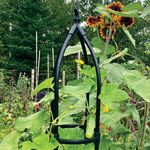
Lee Valley Garden Obelisks
Fine Gardening receives a commission for items purchased through links on this site, including Amazon Associates and other affiliate advertising programs.
Sturdy yet lightweight, these obelisks provide ample support for climbing plants while being easy to install and move. The medium obelisk stands 68 1/2″ high overall with a diameter of about 9 1/2″, compact enough for smaller containers indoors or out. The large size stands 86 1/2″ high with a diameter of 15 3/4″, ideal for larger outdoor spaces and containers.
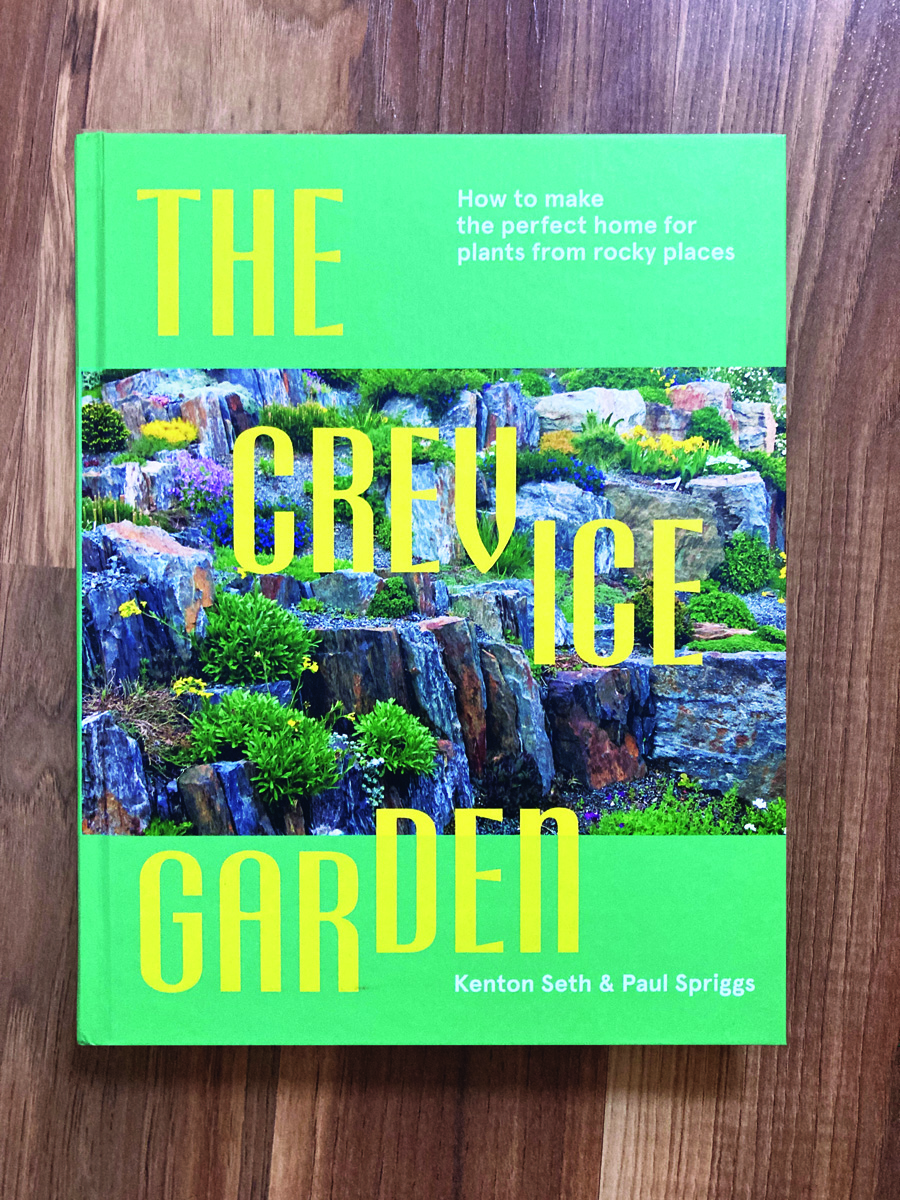
The Crevice Garden: How to make the perfect home for plants from rocky places
Fine Gardening receives a commission for items purchased through links on this site, including Amazon Associates and other affiliate advertising programs.
A crevice garden replicates the environmental conditions of mountain tops, deserts, coastlines, and other exposed or rocky places on earth. These striking garden features provide perfect conditions for the plants native to these far-off places, bringing the cultivation of these precious gems within everybody’s reach.
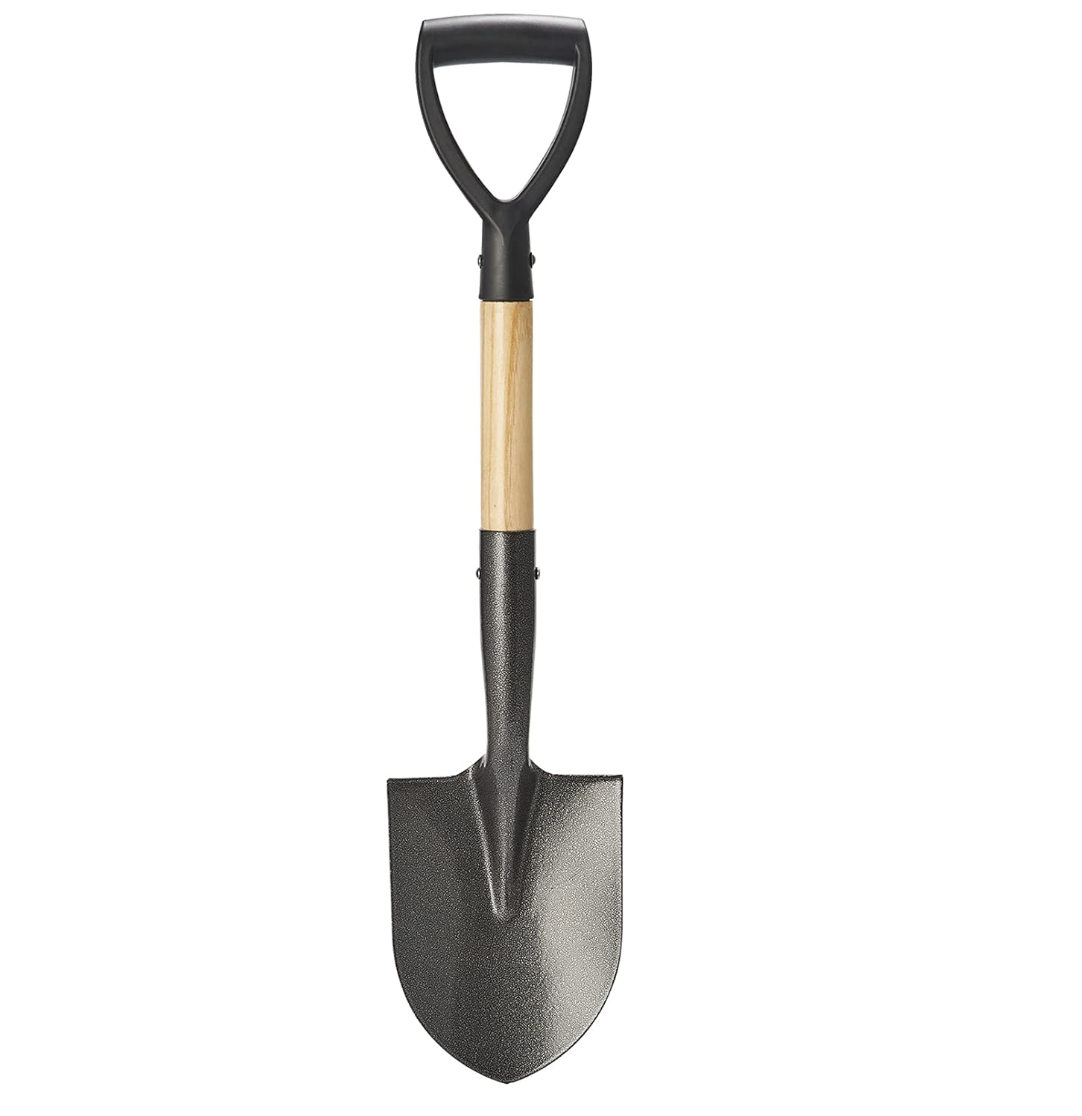
Corona® Multi-Purpose Metal Mini Garden Shovel
Fine Gardening receives a commission for items purchased through links on this site, including Amazon Associates and other affiliate advertising programs.
Longer Service Life: The blade of this round small shovel is made of carbon steel, which can effectively improve the hardness by high temperature quenching, and the surface has anti-rust coating to avoid rusting. In the process of use when encountering hard objects will not bend and deformation.
Sturdy Structure: The small garden shovel with D-handle, ergonomically designed grip can increase the grip of the hand when using, the handle is made of strong fiberglass, will not bend and break under heavy pressure. Quick Digging: Well-made digging shovel has a sharp blade, and the round shovel head is designed to easily penetrate the soil and cut quickly while digging to enhance your work efficiency.

